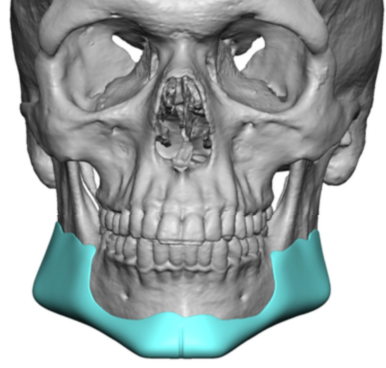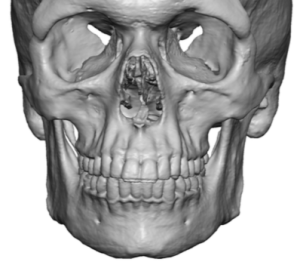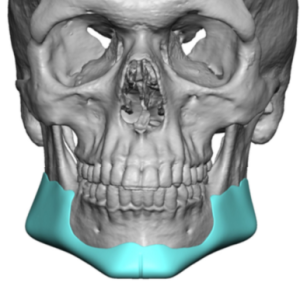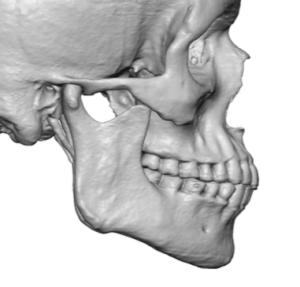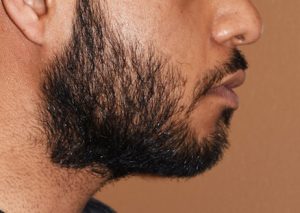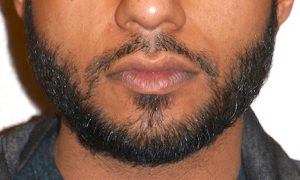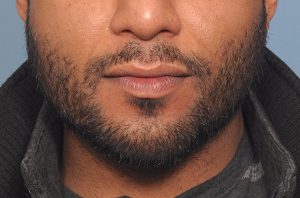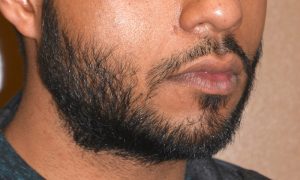Background: Lower jaw augmentation surgery is requested for a variety of aesthetic reasons. Most commonly patients are interested in improvement in their jaw shape, feeling that is weak or ill defined. While this is often perceived as being in the horizontal direction for the chin and at the width of the jaw angles, more patients than not also need a vertical increase in the lower facial length. In the vertically deficient lower face it is seen as being squat or blunted. Men have the capability to compensate for the vertical facial deficiency by growing a beard.
For the entire lower jawline a custom implant is the only method to reliably achieve a 3D augmentation effect including that of vertical lengthening. By designing a portion of the implant to act as an extension of the inferior border the lower face is lengthened either as a part of the lower jawline or of the entire lower jawline. In doing so there are several interesting and pertinent soft tissue effects. With a subperiosteal elevation of the soft tissues off of the inferior border a soft tissue rollout effect occurs. This basically means that soft tissue from the neck is recruited up to cover the implant extension. This will have a bit of a necklift effect which is more evident in older patients when there is more loose tissue below the jawline. But even in younger patients a neck tightening effect will be perceived.
The one potential adverse soft tissue effect is that at the jaw angles. Great care must be taken to try and keep the masseteric muscle sling intact during the subperiosteal elevation along the inferior border. If it gets disrupted/torn this may may make the implant ‘exposed’ postoperatively with the external masseter muscle redacted up along the implant.
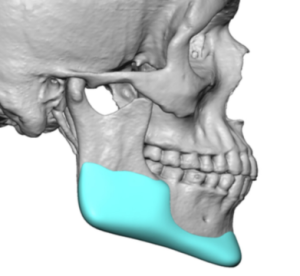
Under general anesthesia the traditional three incisional technique was used for placement. (external submental and paired intraoral incisions)
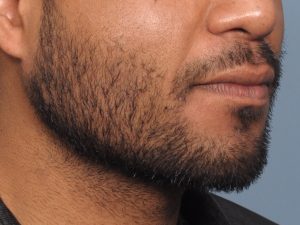
Recognition of a vertically short chin or jawline is one of the most overlooked aesthetic deficiencies of the lower face. It is frequently not recognized because the ability to properly treat it is not well known. Custom jawline implants are the most effective method to treat a vertical lower facial deficiency that is aesthetic in origin.
Case Highlights:
1) Jawline enhancement is a more moderate version of an overall lower facial augmentation in which creating a better jaw shape is more important than just a substantial jaw size increase.
2) Jawline implants exert their effects more by their total surface area coverage than by any single area of implant thickness. This is an important concept to bear in mind in their design.
3) When a thick masseter muscle is present in a vertical short lower jaw it is important to minimize the thickness of the implant material above the inferior border of the ramus.
Dr. Barry Eppley
Indianapolis, Indiana

